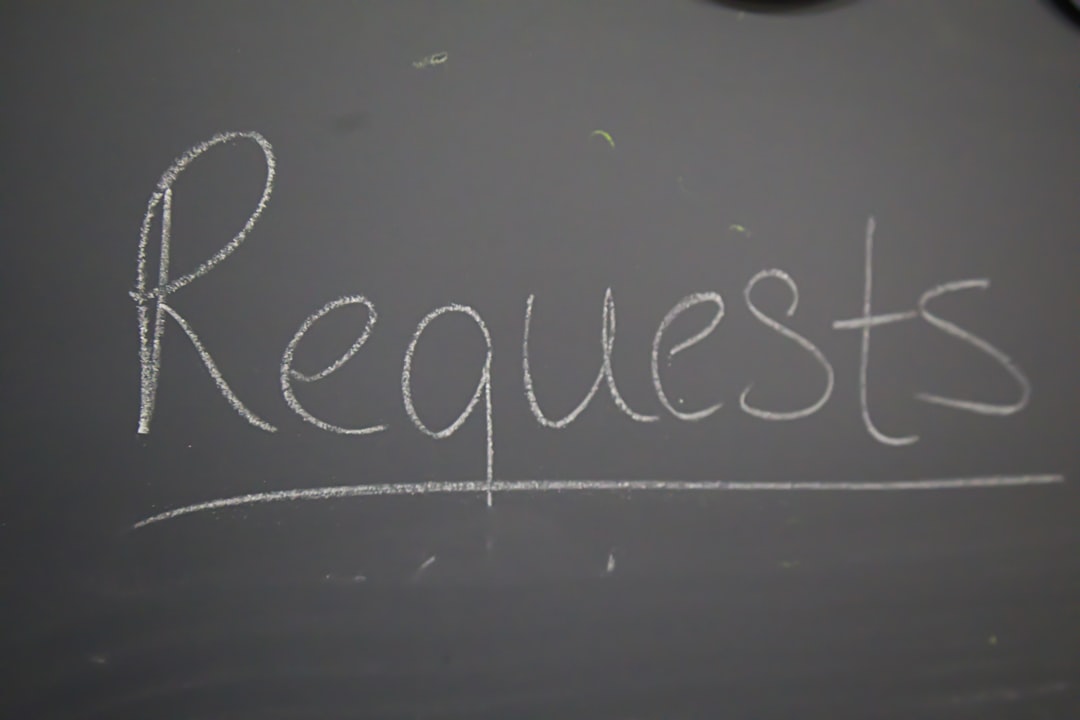

Engage prospects with a scan and streamline customer engagement with FREE QR code marketing tools by Sona – no strings attached!
Create a Free QR CodeFree consultation

No commitment

Engage prospects with a scan and streamline customer engagement with FREE QR code marketing tools by Sona – no strings attached!
Create a Free QR CodeFree consultation

No commitment
Timeshare advocacy services are at a crossroads, as traditional methods often fail to meet rising consumer expectations for efficiency, transparency, and trustworthy guidance. Industry-wide reliance on analog processes such as paper contracts, scattered documentation, and in-person consultations creates friction for owners who need clarity and timely resolution. Too often, clients encounter confusion or skepticism, and advocacy firms struggle to make all client interactions trackable, actionable, and outcome-focused.
QR codes have emerged as a practical response to these bottlenecks, bridging the divide between analog touchpoints and digital experiences. Integrating QR codes into print materials, communications, and legal documents empowers clients to take immediate action, whether they are accessing educational resources, submitting documentation, requesting a contract review, or triggering a timeshare exit inquiry. This digitization of critical moments helps advocacy organizations avoid missing high-value prospects who might otherwise drop out before entering the CRM.
For timeshare advocacy firms, consistently weaving QR codes into every step of the client journey not only boosts lead volume and lifts conversion rates, but also surfaces engagement signals that were previously invisible. By making every scan a measurable event, firms move closer to tracking true demand and demonstrating the impact of their advocacy. The following guide explores how QR codes in marketing address long-standing challenges and set a modern foundation for sustainable client outcomes.

Many timeshare advocacy organizations lose high-value prospects because their first point of engagement is slow or cumbersome. Printed pamphlets, generic phone numbers, and manual intake processes stop momentum and often go untracked. QR codes transform these analog first touches into digital entry points that deliver speed and accountability. A well-placed scan can send an owner straight to a consultation scheduler, a document upload portal, or a cancellation eligibility survey without waiting in a phone queue.
Replacing legacy touchpoints with QR-enabled experiences results in shorter time to response and higher conversion rates. Every scan can be tied to a campaign, channel, and location, which makes it possible to prioritize outreach and allocate budget based on real engagement. Tools such as Sona QR give teams a single dashboard to generate dynamic codes, route traffic to the right destination, and push scan data into the CRM automatically.
By layering QR tracking across print, events, signage, and legal packets, your team turns every offline interaction into a measurable step forward. The result is a reliable pipeline of qualified inquiries, clearer attribution across campaigns, and faster time to resolution for owners who need it most.

In a high-stakes category where trust and timeliness determine outcomes, QR codes address two persistent gaps: the inability to move prospects from offline curiosity to online action, and the lack of visibility into what actually drives conversions. Owners often take materials home, plan to call later, then lose confidence or get sidetracked. A scan removes friction and preserves intent at the exact moment it exists.
QR-enabled journeys are also far easier to measure than traditional analog workflows. Instead of guessing which flyer or postcard worked, you can see scan volume, device type, approximate location, and downstream conversion data. This allows teams to iterate in near real time, redirect budget, and choose placements that drive meaningful outcomes such as booked consultations or contract submissions.
By incorporating QR codes on the assets owners already see and handle, such as direct mail, conference handouts, and legal packets, you not only remove friction but also add a layer of measurement that supports smarter decision-making.

Timeshare advocacy work involves frequent transitions between education, intake, review, and follow-up. QR codes are flexible enough to cover each step with formats that fit the moment. This versatility ensures you can capture the right information quickly, maintain compliance, and keep owners informed without forcing them into a one-size-fits-all path.
In this sector, dynamic codes typically outperform static alternatives because the rules and resources change often. You may need to update destination pages, swap a webinar link, or add new state-specific requirements. Dynamic codes let you optimize without reprinting, while still recording scan analytics for attribution and retargeting.
With a platform like Sona QR, you can generate and manage these formats in one place, apply UTMs for attribution, and connect scan data to your CRM so that every interaction becomes a logged signal you can act on.
Many advocacy firms have strong educational content and competent legal partners, yet still struggle to capture demand from high-intent owners in the wild. Growth often hides in the analog surfaces and in-person moments where interest peaks but goes unmeasured. QR codes turn those surfaces into onboarding ramps that convert attention into action.
To identify these opportunities, map your client journey from first awareness to resolution and circle the points where friction tends to arise. These are often offline moments: a seminar attendee leaving with a packet, a mailed notice about escalating fees, or a billboard near a resort reminding travelers about exit options. Each of these is a prime candidate for QR activation and tracking.
This mapping exercise does more than generate leads. It helps you understand where owners encounter uncertainty, where they need reassurance, and which channels influence their decisions. With that insight, you can tune your message and your media mix for compounding gains.

Recurring bottlenecks in timeshare advocacy include late-stage abandonment, incomplete documentation, and missed opportunities to educate owners before they disengage. QR codes connect each of these moments to the right next step. They also capture data that shows who is ready for a contract review, who needs education, and who is evaluating exit options.
Below are three high-impact use cases that align with common client interactions. Each is designed to reduce friction, increase trust, and create measurable outcomes that support both the owner and the firm.
When these use cases are standardized and consistently deployed, advocacy firms see a clear lift in engagement quality and a decline in no-shows and incomplete cases. Owners feel supported, and staff focus shifts from chasing paperwork to resolving cases.
Each QR scan is a micro-signal of intent. It tells you what message or offer resonated, where the person was, and how urgently they acted. By deploying unique codes across your touchpoints, you automatically segment your audience and can retarget with precision. Instead of guessing who is ready for a consultation, you respond to behaviors that reveal readiness.
Timeshare advocacy firms benefit especially from this approach because owner intent varies widely. Some are curious researchers. Others are distressed and prepared to act. QR scans help you distinguish these cohorts. Paired with a platform like Sona QR, you can tag each scan by source, push it to your CRM, and trigger the right nurture sequence or sales alert. For ad follow-up, use intent-driven retargeting to focus spend on high-intent segments.
These segments improve targeting and protect your team’s time. High-intent scans go to senior staff for rapid handling. Early-stage investigators receive thoughtful education instead of hard sells. Over time, you build a retargeting library that compounds conversion rates while reducing wasted outreach.
QR codes are not a standalone tactic. They are the connective layer that unifies your offline presence with your digital operations. When placed thoughtfully across print, events, signage, and even video, they create an always-on intake system that captures interest when it appears and keeps your message consistent across channels.
In timeshare advocacy, the most productive channels tend to be seminars, direct mail, community publications, and out-of-home near resort destinations. QR codes help you measure these channels with the same rigor you apply to digital campaigns. With a centralized platform like Sona QR, you can manage codes, compare performance, and sync data to your CRM and ad platforms for coordinated follow-up.
QR codes serve as the offline onramp to your digital marketing engine. They unlock new layers of data across channels that were previously hard to measure, providing the attribution and insight required to scale the programs that actually produce results.
A disciplined launch process prevents common pitfalls such as unreadable codes, unclear calls to action, and untagged traffic. It also ensures your staff knows how to promote scans and your systems are ready to capture and act on the data. The following five-step framework helps you move from idea to measurable impact quickly.
Approach this checklist as an iterative cycle. Start with one or two high-impact placements, capture early data, then expand to additional assets and locations. With each pass, your messaging, creative, and follow-up get sharper.
Choose a specific moment in your client journey where engagement often stalls, such as booking a consultation after a seminar, submitting a contract for review, or reporting a suspected scam. A narrow, outcome-linked use case makes measurement clearer and adoption easier for staff.
Match your code type to the campaign’s needs. Static codes may work for evergreen resources, while dynamic codes are best for trackable and adjustable destinations. In timeshare advocacy, regulations and messaging shift, so dynamic is usually preferred.
A QR code is only effective if people see it, understand what they get, and can scan it quickly. Design with contrast, whitespace, and size in mind. Make the call to action specific and benefit driven so owners know the value of scanning.
Start where conversion bottlenecks are most obvious. For most firms, these are seminar packets, direct mailers, legal documents, and office signage. Position codes at eye level, avoid clutter around them, and ensure staff can point to them confidently.
Launch without analytics and you lose the chance to learn. Apply UTM parameters to every destination. Monitor scan volume, conversion rate, and drop-off points. Run A/B tests on headlines, CTAs, and landing pages to improve steadily.
By following this workflow, advocacy organizations reduce time to engagement, lower missed lead rates, and empower staff to focus on qualified prospects. Over time, scan data becomes a key input for budgeting, staffing, and forecasting.

Many organizations struggle to tie offline activity to business results. Without offline attribution, it is hard to justify spend, optimize strategy, or understand which messages matter. QR codes solve this by turning every analog touchpoint into a digital event with traceable outcomes. The ability to connect scans to bookings, uploads, and closed cases provides the accountability leaders expect.
True value comes from linking scans to the entire funnel, not just counting them. When your QR platform integrates with your CRM and attribution tools, you can see which placements create quality conversations, which sequences nurture best, and which combinations of print and digital produce revenue. This is where solutions like Sona QR and Sona.com add significant leverage.
This end-to-end visibility transforms how advocacy firms plan, execute, and fund campaigns. Instead of anecdotal feedback, you gain a consistent measurement framework that links every action to a tangible outcome.
Expanding QR impact requires more than printing codes everywhere. Success comes from precise placement, clear value propositions, and automated follow-up that respects the owner’s journey. Focus on the media your audience already trusts and the moments when they are most motivated to engage.
Choose tips that support a connected experience from first scan to resolution. Align your design and messaging with the physical context, then capture the data you need to keep improving. The following recommendations reflect what works best across advocacy teams serving timeshare owners.
Creative deployment examples that fit this vertical include QR stickers on seminar folders that unlock a private resources page, QR cards handed out at HOA meetings that open a scam checklist, and QR inserts in direct mail that load a personal video introduction from the lead advocate. Each of these reduces uncertainty and builds trust while feeding your measurement stack.
The adoption of QR codes does more than modernize timeshare advocacy workflows. It addresses fundamental pain points around missed leads, untracked engagement, and delayed action. When every analog touchpoint becomes a digital entry point, owners receive the speed and clarity they want, and firms gain the data they need to guide investments and improve outcomes.
QR codes also raise the standard for trust in a category where skepticism is common. Clear calls to action, visible credentials, secure upload portals, and transparent timelines, all accessible with a scan, demonstrate professionalism and care. As owners experience a consistent, responsive journey, they are more likely to follow through and refer others.
Start small by activating your highest-impact assets with QR codes. Use a centralized platform such as Sona QR to generate trackable, dynamic codes, manage destinations, and sync scans to your CRM and ad platforms. Start creating QR codes for free: Start creating QR codes for free.
By transforming every interaction, digital or physical, into a measurable source of insight and conversion, timeshare advocacy firms can nurture prospects more effectively, respond proactively, and demonstrate real, attributable impact. The result is a client experience grounded in trust, efficiency, and transparent outcomes, and a growth engine that turns interest into conversions predictably and at scale.
QR codes have revolutionized timeshare advocacy services by transforming how you engage potential clients and streamline case management. Whether it’s attracting new leads, enhancing client communication, or delivering timely updates on advocacy efforts, QR codes replace outdated processes with instant, mobile-friendly interactions that capture valuable data to boost conversion rates.
Imagine effortlessly tracking which brochures, events, or digital touchpoints generate the most inquiries—and adjusting your campaigns in real time without reprinting materials. With Sona QR, you can create dynamic, trackable QR codes in seconds, update your outreach instantly, and link every scan directly to client acquisition and case progress. No missed leads, no wasted resources—just smarter, more effective advocacy.
Start for free with Sona QR today and turn every scan into a meaningful connection, a confident client, or a successful resolution.
Timeshare advocacy companies offer services such as eligibility assessments, contract reviews, secure document uploads, consultation scheduling, scam education, and negotiation assistance with developers.
You can avoid timeshare cancellation scams by accessing trusted educational resources and scam reporting forms provided by advocacy firms, verifying credentials through legal materials, and using QR codes linked to official guidance and state-specific information.
Ethical cancellation involves completing eligibility surveys, submitting contracts for secure review, consulting with qualified advocates, and following transparent processes supported by legal disclosures and clear timelines.
Advocacy services provide structured support by reviewing contracts, facilitating communication through digital platforms, scheduling consultations, and guiding owners through secure upload portals to streamline negotiations effectively.
Owners should be cautious of late-stage abandonment, incomplete documentation, missed education opportunities, high-pressure sales tactics, and untracked or unclear communication that can lead to confusion or financial loss.
QR codes bridge offline and online interactions by enabling instant access to eligibility surveys, document uploads, consultations, scam education, and secure communications, increasing efficiency, transparency, and measurable engagement.
Best practices include using dynamic QR codes with UTM tracking, placing codes at friction points like seminar packets and legal documents, designing clear calls to action, training staff to promote scanning, and integrating scan data with CRM systems.
Firms use QR codes linked to dashboards that capture scan volume, location, device type, and downstream conversions, which integrate with CRMs to attribute leads, automate follow-up, and refine marketing strategies based on real-time data.
They should define a specific use case, choose appropriate QR code types, design and test codes for visibility and scannability, deploy codes across high-impact channels, and continuously track outcomes to optimize campaigns.
By creating unique QR codes for each funnel stage, tagging scans by use case and location, syncing data to CRM and ad platforms, and responding to intent signals with targeted nurturing and personalized outreach.
Use Sona QR's trackable codes to improve customer acquisition and engagement today.
Create Your FREE Trackable QR Code in SecondsJoin results-focused teams combining Sona Platform automation with advanced Google Ads strategies to scale lead generation

Connect your existing CRM

Free Account Enrichment

No setup fees
No commitment required

Free consultation

Get a custom Google Ads roadmap for your business






Launch campaigns that generate qualified leads in 30 days or less.
